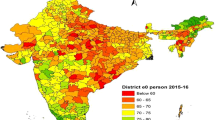Abstract
Background
We assessed trends in infant mortality for Arabic-speakers in Quebec, Canada between 1981 and 2017.
Methods
We computed infant mortality rates for Arabic versus French and English-speakers in Quebec over time. We used adjusted risk ratios (aRR) and 95% confidence intervals (CI) to investigate trends among Arabic-speakers according to socioeconomic status, age, and cause of death.
Results
Infant mortality rates were 3.0 for Arabic-speakers and 5.1 for French and English-speakers per 1,000 live births. Infant mortality increased for Arabic-speakers between 1989–1995 and 2010-2017 (aRR 2.07; 95% CI, 1.04–4.12), but decreased for French and English-speakers (aRR 0.77; 95% CI, 0.73–0.81). The increase in infant mortality was greater for socioeconomically advantaged Arabic-speakers (aRR 2.52; 95% CI, 1.20–5.28) and early neonatal mortality (aRR 1.64; 95% CI, 0.98–2.76).
Discussion
Arabic-speakers in Quebec have a lower risk of infant mortality than French and English-speakers, but increasing infant mortality among Arabic-speakers is narrowing the gap.


Similar content being viewed by others
References
Shumanty R. Mortality: overview, 2014 to 2016. Ottawa: Statistics Canada; 2018.
Guendelman S, Buekens P, Blondel B, et al. Birth outcomes of immigrant women in the United States, France, and Belgium. Matern Child Health J. 1999;3(4):177–87.
Ravelli AC, Tromp M, Eskes M, et al. Ethnic differences in stillbirth and early neonatal mortality in the Netherlands. J Epidemiol Community Health. 2011;65(8):696–701.
Gissler M, Alexander S, MacFarlane A, et al. Stillbirths and infant deaths among migrants in industrialized countries. Acta Obstet Gynecol Scand. 2009;88(2):134–48.
Troe EJ, Bos V, Deerenberg IM, et al. Ethnic differences in total and cause-specific infant mortality in the Netherlands. Paediatr Perinat Epidemiol. 2006;20(2):140–7.
Finkton DW, El-Sayed AM, Galea S. Infant mortality among Arab-Americans: findings from the Arab-American birth outcomes study. Matern Child Health J. 2013;17(4):732–45.
Auger N, Racape J, Raynault MF, et al. Stillbirth among Arab women in Canada, 1981-2015. Public Health Rep. 2020;135(2):245–52.
Bézy S, Payeur F, Azeredo AC, et al. Demographic portrait of Quebec, 2019 Edition. 2019. Institut de la statistique du Québec. https://www.stat.gouv.qc.ca/statistiques/population-demographie/bilan2019.pdf. Accessed 21 Apr 2020.
Statistics Canada. Proportion of mother tongue responses for various regions in Canada, 2016 Census. 2017. https://www12.statcan.gc.ca/census-recensement/2016/dp-pd/dv-vd/lang/index-eng.cfm. Accessed 5 Jan 2020.
Dajani G. 750,925 Canadians hail from Arab lands. 2014. https://static1.squarespace.com/static/5e09162ecf041b5662cf6fc4/t/5e5c6fe517c29a501a5a0e14/1583116261768/750%2C925+Canadians+Hail+from+Arab+Lands.pdf. Accessed 5 Jan 2020.
Ford CL, Harawa NT. A new conceptualization of ethnicity for social epidemiologic and health equity research. Soc Sci Med. 2010;71(2):251–8.
Sterne JA, White IR, Carlin JB, et al. Multiple imputation for missing data in epidemiological and clinical research: potential and pitfalls. BMJ. 2009;338:b2393.
Oza S, Cousens SN, Lawn JE. Estimation of daily risk of neonatal death, including the day of birth, in 186 countries in 2013: a vital-registration and modelling-based study. Lancet Glob Health. 2014;2(11):e635–44.
Cole S, Hartford RB, Bergsjø P, et al. International collaborative effort (ICE) on birth weight, plurality, perinatal, and infant mortality. III: a method of grouping underlying causes of infant death to aid international comparisons. Acta Obstet Gynecol Scand. 1989;68(2):113–7.
Auger N, Park AL, Daniel M. Contribution of local area deprivation to cultural-linguistic inequalities in foetal growth restriction: trends over time in a Canadian metropolitan centre. Health Place. 2013;22:38–47.
Pampalon R, Hamel D, Gamache P, et al. An area-based material and social deprivation index for public health in Québec and Canada. Can J Public Health. 2012;103(Suppl. 2):S17–22.
Abuelezam NN, El-Sayed AM, Galea S. The health of Arab Americans in the United States: an updated comprehensive literature review. Front Public Health. 2018;6:262.
Reidpath DD, Allotey P. Infant mortality rate as an indicator of population health. J Epidemiol Community Health. 2003;57(5):344–6.
Blaxter M. The health of children. A review of research on the place of health in cycles of disadvantage. London: Heinemann Educational; 1981.
El Reda DK, Grigorescu V, Posner SF, et al. Lower rates of preterm birth in women of Arab ancestry: an epidemiologic paradox—Michigan, 1993–2002. Matern Child Health J. 2007;11(6):622–7.
El-Sayed AM, Galea S. Explaining the low risk of preterm birth among Arab Americans in the United States: an analysis of 617451 births. Pediatrics. 2009;123(3):e438–45.
Franzini L, Ribble JC, Keddie AM. Understanding the Hispanic paradox. Ethn Dis. 2001;11(3):496–518.
Urquia ML, Frank JW, Moineddin R, et al. Immigrants’ duration of residence and adverse birth outcomes: a population-based study. BJOG. 2010;117(5):591–601.
El-Sayed AM, Galea S. Community context, acculturation and low-birth-weight risk among Arab Americans: evidence from the Arab-American birth-outcomes study. J Epidemiol Community Health. 2010;64(2):155–60.
Heslehurst N, Brown H, Pemu A, et al. Perinatal health outcomes and care among asylum seekers and refugees: a systematic review of systematic reviews. BMC Med. 2018;16(1):89.
Hyman I, Dussault G. The effect of acculturation on low birthweight in immigrant women. Can J Public Health. 1996;87(3):158–62.
Abuelezam NN, El-Sayed AM, Galea S. Relevance of the “immigrant health paradox” for the health of Arab Americans in California. Am J Public Health. 2019;109(12):1733–8.
Negy C, Woods DJ. A note on the relationship between acculturation and socioeconomic status. Hisp J Behav Sci. 1992;14(2):248–51.
Crump C, Lipsky S, Mueller BA. Adverse birth outcomes among Mexican-Americans: are US-born women at greater risk than Mexico-born women? Ethn Health. 1999;4(1–2):29–34.
Almeida LM, Caldas J, Ayres-de-Campos D, et al. Maternal healthcare in migrants: a systematic review. Matern Child Health J. 2013;17(8):1346–54.
Trempe N, Boivin M-C, Lo E, et al. Assessment of validity for the ‘language spoken at home’ variable in Québec death records: summary. Québec: Institut national de santé publique du Québec; 2012.
Acknowledgements
This work was supported by Health Canada via the McGill Training and Retention of Health Professionals Project [3.1/2019-2021/06/01], and the Fonds de recherche du Québec-Santé [34695].
Author information
Authors and Affiliations
Corresponding author
Additional information
Publisher's Note
Springer Nature remains neutral with regard to jurisdictional claims in published maps and institutional affiliations.
Rights and permissions
About this article
Cite this article
Bolster-Foucault, C., Bilodeau-Bertrand, M., Djeha, A. et al. Infant mortality among Arabic-speakers in Quebec, Canada, 1989–2017. J Immigrant Minority Health 23, 215–221 (2021). https://doi.org/10.1007/s10903-020-01115-1
Accepted:
Published:
Issue Date:
DOI: https://doi.org/10.1007/s10903-020-01115-1




